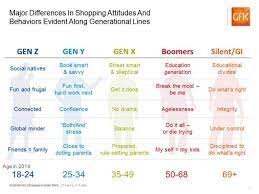How can low and no alcohol wine engage with 'moderating' millennial and gen-z wine consumers?
Photo courtesy of Villa Maria Estate.
A piece by Wine Intelligence.
Author: Lulie Halstead
HOW CAN LOW- AND NO-ALCOHOL WINE ENGAGE WITH ‘MODERATING’ MILLENNIAL AND GEN Z WINE CONSUMERS?
Younger LDA wine consumers in the US are actively moderating their alcohol intake more than older drinkers. How can low- and no-alcohol wine connect with this cohort?
The US is a key market for low- and no-alcohol wine, and is expected to continue to grow, with a forecast volume CAGR of almost 10%, 2020 to 2024, according to IWSR data. As health and wellness cues continue to influence consumers’ drinking choices, we look at how younger LDA wine drinkers are responding to these product offerings.
Wine Intelligence research shows that 64% of regular wine drinkers in the US are not actively moderating their alcohol consumption. Amongst the 1/3rd of wine drinkers who are moderating, 19% do so by not drinking alcohol at certain occasions, 14% by switching to low-alcohol options at selected occasions, and 12% by switching to non-alcohol drinks instead.
A higher proportion of those who are moderating are from the LDA Gen-Z consumers and younger Millennials (ages 21-34) age cohort. Across age groups, more men than women are seeking out low or no-alcohol wines.
In terms of awareness of low- and no-alcohol wine, this is proportionally quite low compared to other types of wine, with all consumer demographics having similar levels of awareness. There is, however, a more pronounced difference between lower-involved wine consumers and higher-involved wine consumers, with higher-involved consumers having a greater awareness of both wine that is made to be lower in alcohol, and wine that is naturally lower in alcohol.
In terms of purchase intent, it is once again the younger LDA drinkers, as well as higher-involved drinkers, who are more likely to consider purchasing lower-alcohol wine in the future. For the younger LDA consumers, the overriding motivation for purchasing lower-alcohol wine is a desire to stay in control, unsurprising in a world of constant connectivity. Additionally, Gen Z and Millennial consumers are motivated by the fact that low- and no-alcohol wines tend to be lower in calories and considered to be ‘better for health’.
When looking at the barriers to purchase low- and no-alcohol wine, our data shows that brand owners have an opportunity to improve the perception of low-alcohol wine with younger LDA wine drinkers. Countering a move towards moderation, younger drinkers (of LDA) state that the main barrier to purchasing lower alcohol wine is that it does not contain enough alcohol to feel an effect. Additionally, they perceive low-alcohol wine to be ‘not really wine’, their favourite brand doesn’t offer a low-alcohol option and lower taste and quality perceptions.
The key opportunity for producers of low- and no-alcohol is to focus on both the core potential drinkers – Gen Z and Millennials – and the functional benefits of supporting a moderating lifestyle, coupled with benefits such as lower calories and lighter, fresher flavours.


